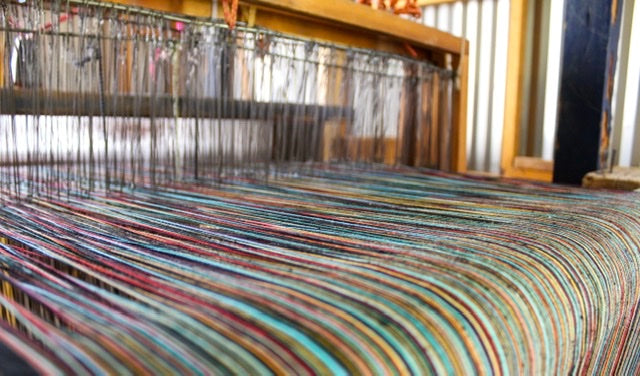
TRADICIÓN TEXTIL VS TEXTIL TRADICIONAL
Share
Como es muy bien sabido, en México existe una tradición textil centenaria, incluso data mucho antes de la conquista, donde las mujeres utilizaban el telar de cintura para la elaboración de las prendas que utilizaría toda la población de su comunidad. Muchas de estas tradiciones viven hasta nuestros días, donde vemos comunidades de diferentes regiones del país luciendo textiles, colores y/o bordados representativos de esa cultura y de sus tradiciones y costumbres.
As is well known, in Mexico there is a centuries-old textile tradition, even dating back long before the conquest, where women used the back strap loom for the elaboration of the garments that would be used by the entire population of their community. Many of these traditions live to this day, where we see communities from different regions of the country wearing textiles, colors and/or embroidery representative of that culture and its traditions and customs.

Pero cuando hablamos de tradición textil, no solo hablamos de las vestimentas características o representativas de estas comunidades, también hablamos de una tradición viva, que crece y evoluciona con el desarrollo y creatividad de los propios artesanos, quienes mantienen vivas, con su talento, esta hermosa tradición.
But we talk about the textile tradition, we not only talk about the characteristic or representative clothing of these communities, we also talk about a living tradition, which grows and evolves with the development and creativity of the artisans themselves, who keep alive, with their talent, this beautiful tradition.

Por eso, decimos que no es lo mismo textil tradicional, que tradición textil; en el primero, nos referimos a esas vestimentas utilizadas por determinadas comunidades, en las que se ven representadas por ciertos tejidos, ya sea en telar de pedal o de cintura, o incluso bordados que cuentan parte de su historia y cultura. Igualmente, creemos que todas estas tradiciones deben ser cuidadas y respetada.
That is why, we say that it is not the same traditional textile, as the textile tradition; in the first, we refer to those garments used by certain communities, in which they are represented by certain fabrics, either on a pedal or waist loom, or even embroidery that tell part of their history and culture. Likewise, we believe that all these traditions must be cared for and respected.

Pero por otro lado, también es importante buscar honrar nuestra rica tradición textil, impulsando y revalorizando el exquisito trabajo que realizan los maestros artesanos del telar de nuestro país. El trabajar con artesanos, en colaboración para la creación de textiles originales, pero utilizando la técnica tradicional del telar, tanto de cintura como de pedal, agrega valor a este importante trabajo y propicia que se mantengan viva la labor de nuevos artesanos, quienes heredan el oficio de generación en generación.
But on the other hand, it is also important to seek to honor our rich textile tradition, promoting and revaluing the exquisite work done by the master craftsmen of the loom of our country. Working with artisans, in collaboration for the creation of original textiles, but using the traditional technique of the loom, both waist and pedal, adds value to this important work and encourages the work of new artisans to be kept alive, who inherit the profession from generation to generation.

Por lo tanto, mientras se puede apreciar el valor histórico, cultural y estético de la vestimenta representativa de diferentes comunidades de nuestro país, al mismo tiempo que se busca que las mismas perduren por muchas generaciones, igualmente se puede impulsar una tradición que es vibrante, rica y muy abierta a la creación de nuevos diseños en el textil, mismos que dan origen a prendas que nos enorgullecen como mexicanos, mientras lucimos piezas únicas y llenas de historia, cultura y el corazón de nuestra gente.
Therefore, while you can appreciate the historical, cultural and aesthetic value of the representative clothing of different communities of our country, at the same time that it is sought that they last for many generations, you can also promote a tradition that is vibrant, rich and very open to the creation of new designs in textiles, which give rise to garments that make us proud as Mexicans, while we wear unique pieces full of history, culture and the hearts of our people.

